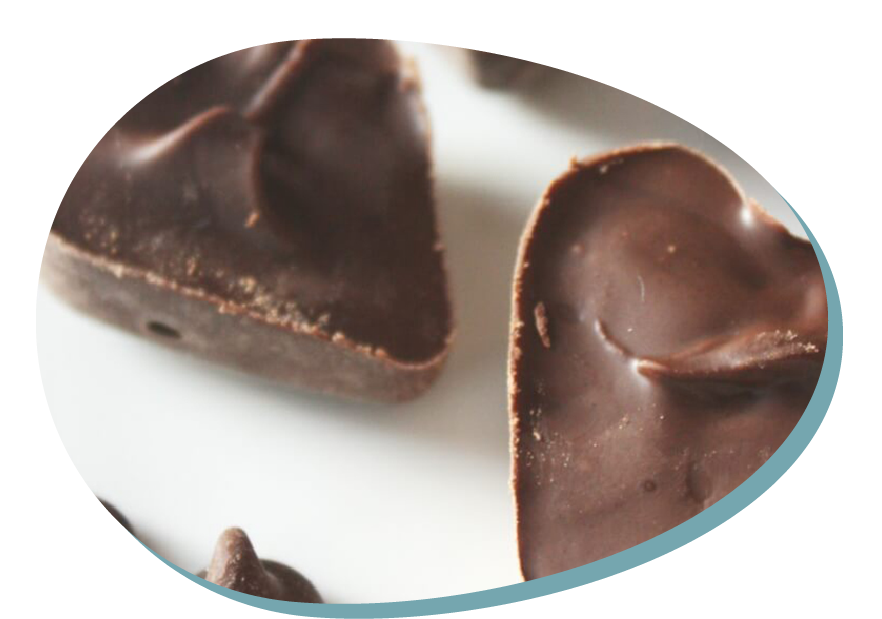Chocolate Science – reversible change
Type of resource: Website
Web address https://littlebinsforlittlehands.com/chocolate-science-reversible-change-food-science/
Language: English
Description
Investigating the science of reversible change. It explores melting and freezing chocolate.
Scientific concept introduced
Exploring physical change: Reversible Change.
Creative and critical thinking
Critical Thinking:
Analysis
Inference
Creative Thinking:
Imagining
Mathematical reasoning
Counting
Sequencing
Scientific thinking
Questioning
Observation
Prediction
Testing
Analysising
Drawing conclusions
Learning how to learn
Self-efficacy in learning
Engagement in learning
Learning collaboratively
Additional
Following instructions
Cooking skill of stirring
Oral language – describing substances appearance in different states
Pre-reading skills eg sequencing
Safety in the kitchen
Chocolate Science – reversible change
Overall aims
To enable pupils to explore the effects of heating and cooling on chocolate
To develop pupils’ skills in following instructions
To develop pupils’ skills in observing and predicting
To develop pupils’ skills in counting
Vocabulary – keywords should be understood
Chocolate, change, turn back, bowl, saucepan, heat, melt, cool, freeze, liquid, hard, lumpy, ingredients
Expected learning outcomes (operational aims)
The child will be enabled to:
– follow instructions for melting chocolate
– count items including chocolate chips, mold cups
– practice the skill of stirring
– observe and describe chocolate as a liquid and solid
STEM skills – to which the learning unit is related to
CORE STEM SKILLS
Asking questions
Observing and making predictions
Testing
Analyzing the results of heating/cooling
Drawing conclusions
ADDITIONAL SKILLS
Hand-eye coordination
Fine-motor skills
Writing
Reading
Oral Language
Following rules of safety
Group work
Teaching methodologies/activity outline
Teacher Note: Reversible change is a physical change in which a substance can be converted back to its original state without creating new material. In cooking, we can see reversible change in melting and freezing.
Introduction
Begin by asking pupils what they understand by ‘reversible’? Use the example of a coat or jacket which is reversible – it can be turned inside out/outside in – either way.
Ask pupils to describe the chocolate using various senses, for example:
Sample questions: What colour is the chocolate? How does it smell? How does it fell? How does it taste? How does it sound when you take a bite of a chocolate chip.
Activity
1. Ask pupils to place the chocolate chips in a bowl, counting them.
2. Carefully place the bowl with chocolate chips on top of a saucepan with cold water. Slowly heat the water.
3. Ask pupils to carefully stir the chocolate chips, observing and noting how its appearance changes as they stir. Ask pupils to continue to stir until all the chocolate has melted. Again, encourage pupils to use their senses to describe the chocolate now in liquid form.
Sample questions: What does the chocolate look like now? / How is it different/the same as the chocolate chips? What has happened to the chocolate? / Why did the chocolate melt?
4. When the chocolate has melted, remove from heat and ask pupils to help spooning the melted chocolate into the mold – pupils filling a mold each. Leave to cool and then refrigerate. After the chocolate has had time to freeze, discuss the following:
Sample questions: Does the chocolate in the mold look like the chocolate chips? How is it different/the same? / Does the chocolate feel hard like the chocolate chips? / What has happened by melting and then freezing the chocolate?
5. Explain that if we had the exact right mold, the chocolate could be turned back into chocolate chips again. This is a ‘reversible change’ – when we make a change that can be undone. Ask pupils to think of what mold they would like to use for melting and freezing chocolate.
6. Explain irreversible change – Ask pupils in pairs to chat about what ingredients are used to make a cake.
Sample questions: What ingredients do I use to make a cake?/ Once I make a cake, can I turn the cake back into all the ingredients I used? This is an example of irreversible change.
Conclusion
Ask children in small groups to draw on a large page, the steps they took in their investigation i.e.
1. Looking (Observation)
2. Melting
3. Freezing
Ask them to draw how the chocolate looked at each stage and to label each step.
Assessment of learning
Pupil observation sheet
Equipment and materials to be used in learning unit (tools, ingredients etc)
– Chocolate chips
– Bowls
– Saucepan
– Spoon
– Baking mold
Kind of setting
Kitchen or classroom with cooking facilities (ie hot stove).
References – source
Website: https://littlebinsforlittlehands.com/chocolate-science-reversible-change-food-science/#comments
Chocolate Science – reversible change
1. Usefulness for STEM education – integrating content of different disciplines
Cross-curricular character of the resource

The range of S-T-E-M subjects included

The presentation of possibilities of including artistic activities (STEAM approach)

2. Expected learning outcomes
Consistency (links) with preschool core curriculum

Communicativeness of description

3. Methodology of teaching
Clarity, communicativeness of instructions for teachers

Meaningful learning – using practical life problems

Original idea

The level of ease in implementing the methodology to preschool age children

The level of ease in preparing necessary ingredients, materials and equipment needed

4. Sustainability
Ecological characteristics of materials/ results

Supporting healthy eating habits

Low ecological footprint

Possibilities of inclusion (respecting cultural diversity and food intolerances)

5. Class management
Using differentiated forms of work – individual, team work etc.

Individual work

Team work

Whole group
6. Time management

Short activity (10-15 minutes)

Medium activity (20-30 minutes)

Long activity (1 hour or more)

Very long activity (1 day or more)
PDF: https://www.printfriendly.com/p/g/zM3Lsq

